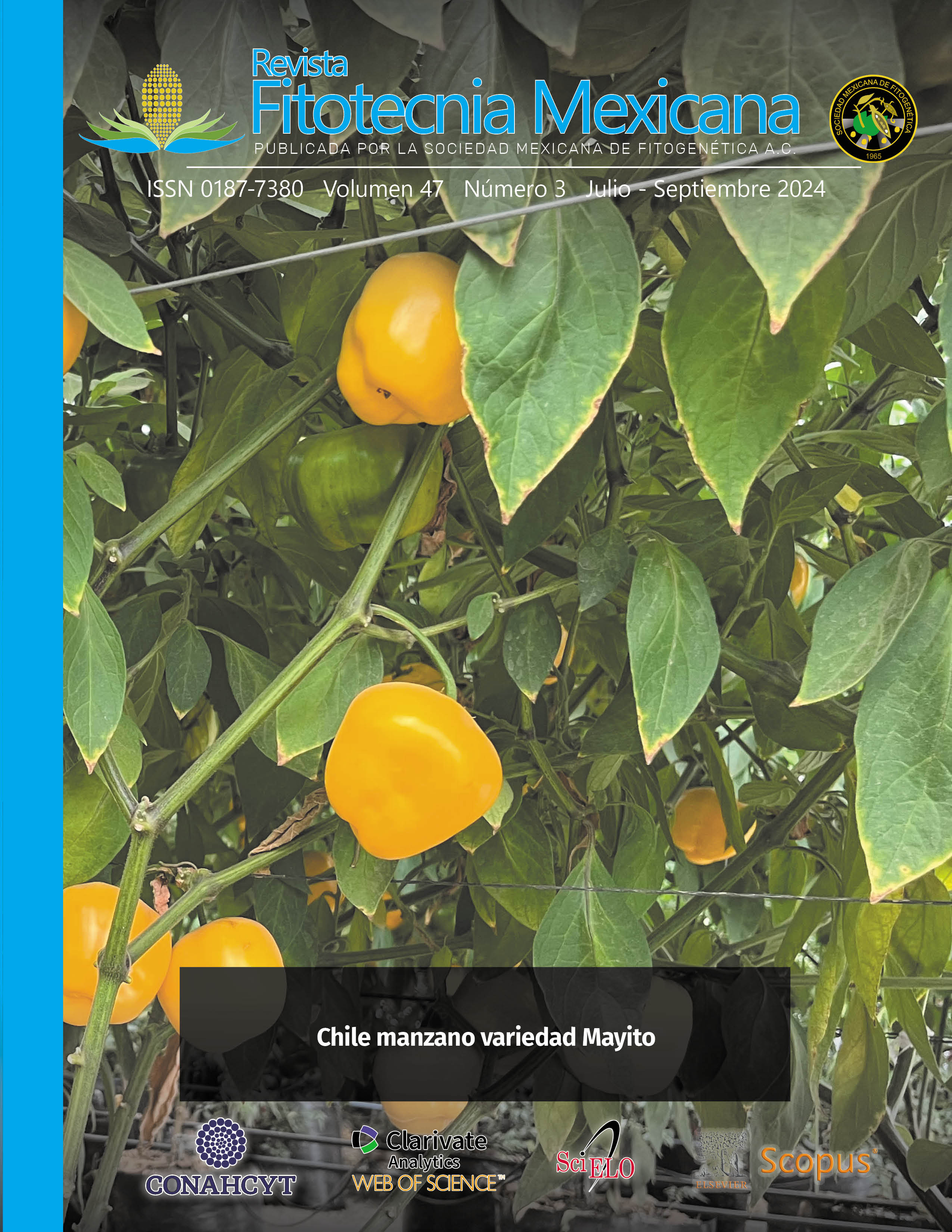DIVERSITY AND GENETIC STRUCTURE IN SINGLE-CROSS INTRASPECIFIC HYBRIDS OF VANILLA AND PARENTAL ACCESSIONS
Main Article Content
Abstract
Knowledge of genetic diversity is of great importance in the design and execution of a breeding program, as its success depends on it; thus, the objective of this study was to estimate the genetic diversity of 21 intraspecific single-cross hybrids and their parents of Vanilla planifolia with molecular data obtained by PCR amplification of four inter-simple-sequence repeats (ISSR) markers from genomic DNA isolated from leaves. The parameters of polymorphic information content (PIC), marker index (MI) and resolving power (RP) were estimated. To evaluate genetic differentiation within and between populations, an analysis of molecular variance (AMOVA) and principal component analysis were performed. To identify the genotypes with higher similarity, a cluster analysis was performed with Jaccard genetic distances, and a Bayesian cluster analysis was carried out to determine the genetic structure. The ISSR-T06 marker had the highest PIC (0.31), while the ISSR-C10 had the highest MI (2.55) and RP (17.08). AMOVA revealed 97 % of genetic variance within populations and 3 % between populations (P ≤ 0.01), these results indicate that more individuals per population should be retained for the species conservation. GAP and Elbow tests and Bayesian clustering analysis differentiated two groups, while the Jaccard genetic distance analysis detected low levels of association between genotypes, suggesting the existence of a single group. The first group was made up of parental accessions which presented few allelic differences, whereas the second group was integrated by hybrids that presented a higher percentage of polymorphic loci; likewise, it revealed an increase of 3 % in diversity between populations. Hybridization between individuals of different origin is a feasible tool to increase diversity between populations.

